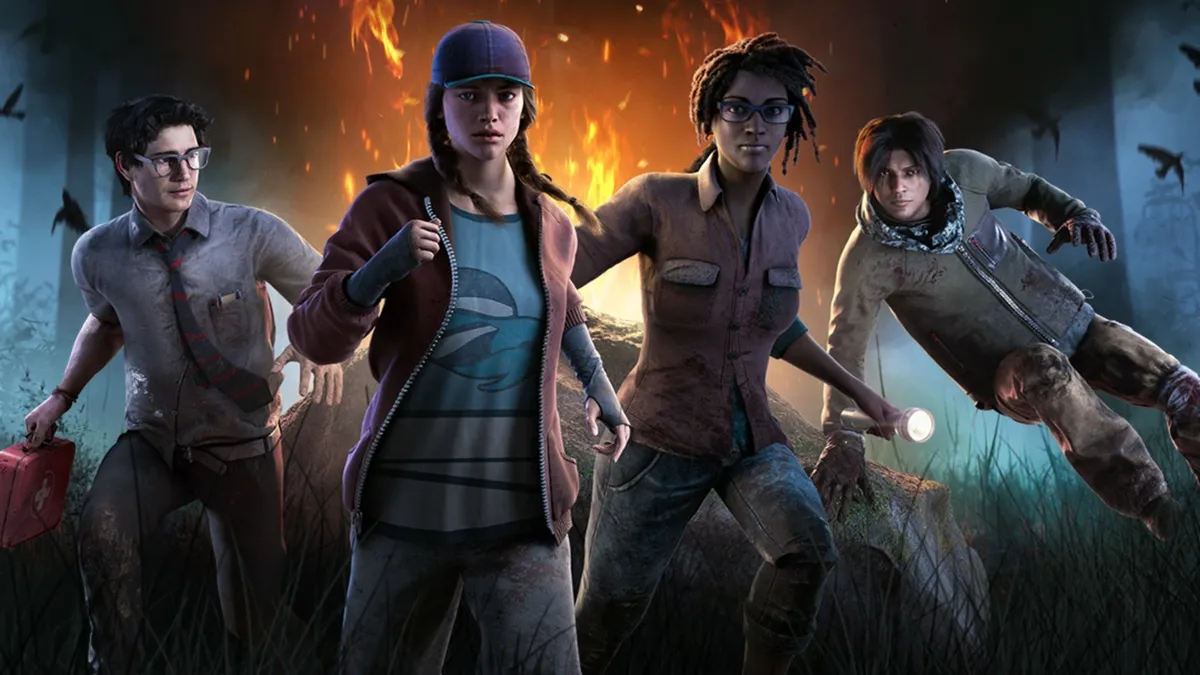
Humanity needs war it seems. Day after day, the news is filled with reports about ongoing conflicts, which seem to get even more brutal as the years go on. Sometimes it’s a necessary evil, which makes the fight a bit easier to live with. Other times, no good seems to go into or come out of a battle.
As gamers, we wish for the safety of our countrymen fighting abroad, playing simulations of what they’re going through in real-life. Most of the time, these games are in the form of first-person shooters, taking place on a realistic or fictional battlefield. The latest one to add its name to this lengthy list is the fictitious wartime shooter, Bodycount from Codemasters. Is it worth your hard earned cash and virtual bullets? Let’s discuss that.
Bodycount is thought of as being the spiritual successor to one of my favourite first-person shooters from the last console generation: Black. Developed by the same team (Codemasters Guildford), it’s another shoot first, ask questions later experience.
The problem is that there isn’t much else to it. It’s all gunplay and pretty much nothing else, with a vague and poorly explained storyline which will leave players caring very little about the world they’re interacting in. The latter part is an absolute shame considering the obvious potential for an interesting storyline to have been created around the game’s premise. Though, with only a handful of short cutscenes and very little dialogue other than mission orders, that boat has sailed into missed opportunity waters.
From what I gathered, Codemasters‘ latest follows a new recruit into a covert organization known as the Network. Its goal is to infiltrate wars around the world, attempting to put an end to the conflicts, which seems rather noble. Playing as their newest member, gamers must travel to Africa and Asia, in order to explore the reasons behind a heated outburst between some rival factions.
What originates as a tale about humanity’s conflicts quickly turns into a confusing science fiction bullet symphony once it’s discovered that not all is as it seems. There are some strange characters behind the battle and they’ve become the top priority in your investigation. We’ll refer to them as the game does, using their aptly named title of the Target.
Acting as a third party entering the middle of a heated conflict, it’s not hard to imagine that you’d be less than welcome. As a result of this reasoning, one of Bodycount‘s more interesting but under-developed aspects is the fact that you’re against both sides of a war – something we rarely see in interactive entertainment.
It’s a bit of a cool twist, though the neatness wares off quickly once you realize that it means a lot more enemies are wishing you gone. On the contrary however, your wishes are sometimes answered when an ongoing gunfight ends up taking out a decent amount of your foes. This happens the odd time but not as often as you’d think, due to the ease at which the player is noticed when he’s around artificial intelligence soldiers.

Gameplay consists of traditional first-person shooting mechanics, including the option to rock and duck on one axis if the player presses the left trigger in all the way. The goal being to not only shoot your enemies full of lead, but to do it in stylish fashion, with a skillshot system that brings memories of Bulletstorm to the forefront.
Unfortunately, the system in place in Bodycount is much more basic than anything found in the aforementioned style shooter. The list of creative kills is limited to surprise kills, backstabs, explosive takeouts and headshots. Multipliers are awarded but they don’t seem to really affect the game much, featuring for show instead of as a great bonus award. A bit more intel is dropped during great skillshot runs, but it wasn’t a staggering difference.
Now, you’re probably thinking about the word intel, wondering if it’s something players pick up off of the ground to read like in many other shooters. Actually, no. There’s no paper to read or news clippings to find here. The intel we’re speaking of is actually shown in the form of Crackdown-esque orbs. Displaying in red, blue and yellow, each one represents something different.
One type gives out ammo, while another fills the player’s special move meter. It’s this set of four different power-ups (explosive bullets, EMP emittance, timed invincibility and an airstrike,) which happen to be your lifeline during some sections of the experience. They’ll assist you in tough segments, becoming pivotal attacks against bosses.
The six to eight hour long campaign consists of close to twenty different missions, mostly spread out in Africa and Asia. There are a select few which find themselves located in strange ship-like contraptions, with interior designers and enemy creators who must have worked on one of the Tron movies. These Network infiltration missions alter the core game quite a bit as they provide a noteworthy change in tactics and level stylings. Instead of being able to take your time, scoping out enemies in a large open area, you’re thrust into tiny hallways and large open rooms with next to nothing to hide behind. At least, very few items which can withstand plasma grenades or gunfire from a group of enemies more interested in rushing than they are in worrying about their lives.
My time spent playing through this chaotic shooter from beginning to end, was focused on its hard difficulty level. It’s the third option out of four, with the latter one referred to as insane. Unless you’re a masochist, I don’t recommend ever trying option number four, based on how nuts its earlier brother was. The game really threw everything and the kitchen sink at me, which provided a challenge but also became quite frustrating at times due to its over use of choke points. Difficulty was also artificially added through a frustrating checkpoint system, which felt unevenly spread out. There were also no safeguards preventing from checkpoints saving enemy interactions. This meant that I reloaded quite a few saves just to find an enemy immediately shooting lead into my face upon insertion.
At several points during the game, luck became much more important than skill. I understand that developers feel the need to challenge gamers, but there has to be a better way than creating mass pandemonium with these almost impossibly difficult points where tons of perfect aim enemies converge on your location at once with next to no good cover.

Bodycount is the type of game where it seems like you’re actually being shot from everywhere, which doesn’t help out the above segments. Finding cover is extremely difficult at times because foes converge from every which way. Becoming lucky means being able to find a bit of cover which can stop bullets coming from each different angle.
Many of the game’s cover items such as concrete, wooden siding and the like, actually deteriorate with bullets and explosions, so it’s hard to hide behind them for long. For some reason, the many servers positioned in later rooms actually stop explosions and bullets better than anything. The deterioration effect is actually quite impressive and adds some realism to an otherwise arcade experience, but I have gripes with the fact that enemies could shoot me through cover a lot of times, despite there being no damage to the hiding spot.
When I wasn’t being chased around a tiny room by a bunch of suicidal bad guys, the campaign experience was alright. The large area given to each outside mission presented a good amount of options when it came to deciding how to take down each foe. Those stages also had much more creative objectives such as destroying satellites or infiltrating a bunker.
The interesting procedure dissipated during the interior missions which focused on the Target, as their objectives became quite stinted and repetitive. Running from point A to point B in order to hack this and sabotage that got pretty boring after a while. During those missions, I’d look forward to the next outdoor area or more creative objective.
There are certainly similarities to Black, such as the over-the-top gunplay and grenade tossing, but I don’t feel Bodycount is as good of a game. It feels quite basic and stilted in its design, never moving out of a safety zone full of traditional first-person shooter elements. This is a game which doesn’t bring anything new to the genre or the proverbial table, delivering a ho-hum experience overall.
Instead of being the stylish shooter we all hoped it would be, it’s instead a mediocre collaboration of elements from previous titles, combined in an average package. Not a bad game, but also nothing to write home about, it hovers on the fulcrum of mediocrity. Had the choke points not been utilized for extra challenge and if the cover system worked better, the game would have fared a bit better.
Hoping to climb onto the multiplayer popularity express train, the development team added in a few traditional competitive and co-operative modes. You have both team and free-for-all deathmatches which aren’t too bad. Unfortunately, it was nearly impossible to demo them with a full lobby, due to the game’s tiny community.
Those options felt a bit too basic despite the addition of the power-ups from the campaign, needing some sort of unique quality to bring people in. Though, the mode which needs the biggest punch in the arm from a creativity god is the co-operative horde option. It’s far too similar to anything else on the market, failing to deliver new elements other than the odd powered attack. There was potential for a good four-player survival fest over the handful of decent maps Bodycount possesses, but it never fully materialized.

Previously in this review, I mentioned the destructible cover system which this affair makes good use of. Its realistic destruction carries over into some of the buildings, allowing players to shoot their way through a bit. This aspect was one of the more impressive features found on the game disc, combining with a colourful art style which also impressed me. Instead of going for the overtly realistic brown and black tones found in most shooters, the team decided to go with a more cel-shaded style.
Its look reminded me once again of Crackdown, though with some additional lighting effects and a more pronounced use of darkness. This art style is pretty neat during the open air segments in both Africa and Asia, where the sun and neon lighting play a role in the look of the game world. However, the interiors of the Target’s futuristic buildings left me feeling a bit drab, because of their basic look and bland design.
Your speakers will get quite a wallop with the sounds of explosions, rattling gunfire and yelling enemies. The term loud describes the audio quite well and, with an arcade shooter, that’s what you want. It allows players to feel in the moment, with a sense of power which is there in gameplay on easier difficulties though severely lacking later on.
The original score is pretty good at setting the chaotic mood, though the title’s voice acting is less than stellar. The lady who assists you during battle through the aid of an intercom, should have spoken up a bit more because she was quite tough to hear even when the volume was set at a boisterous level. Additionally, I found that the audio volume dropped significantly during each of the game’s handful of cutscenes. It was hard to hear all of what was being said, forcing a quick rush to turn up the volume.
In conclusion, I feel that Bodycount was a missed opportunity. Coming from the same team that brought us one of the most exciting first-person shooters of the last decade, I honestly expected more. Poor cover mechanics, frustrating choke points and some basic gameplay, really hamper the experience into becoming a mediocre at best affair. It’s too bad because there are elements of a pretty good game here, which shone through during a couple of the Asia missions. Unfortunately, the entire game wasn’t as impressive.
Those looking for a challenging first-person shooter gauntlet need apply, but others might want to try a demo before they buy. There’s some fun to be had here with decent weaponry but it’s hidden by a lack of creative mechanics then packaged in a ho-hum wrapper full of kamikaze mercenaries. A spiritual successor to a well-liked game is what Bodycount may be, but it unfortunately doesn’t live up to the created hype.
This review is based on a copy we received for review purposes.






